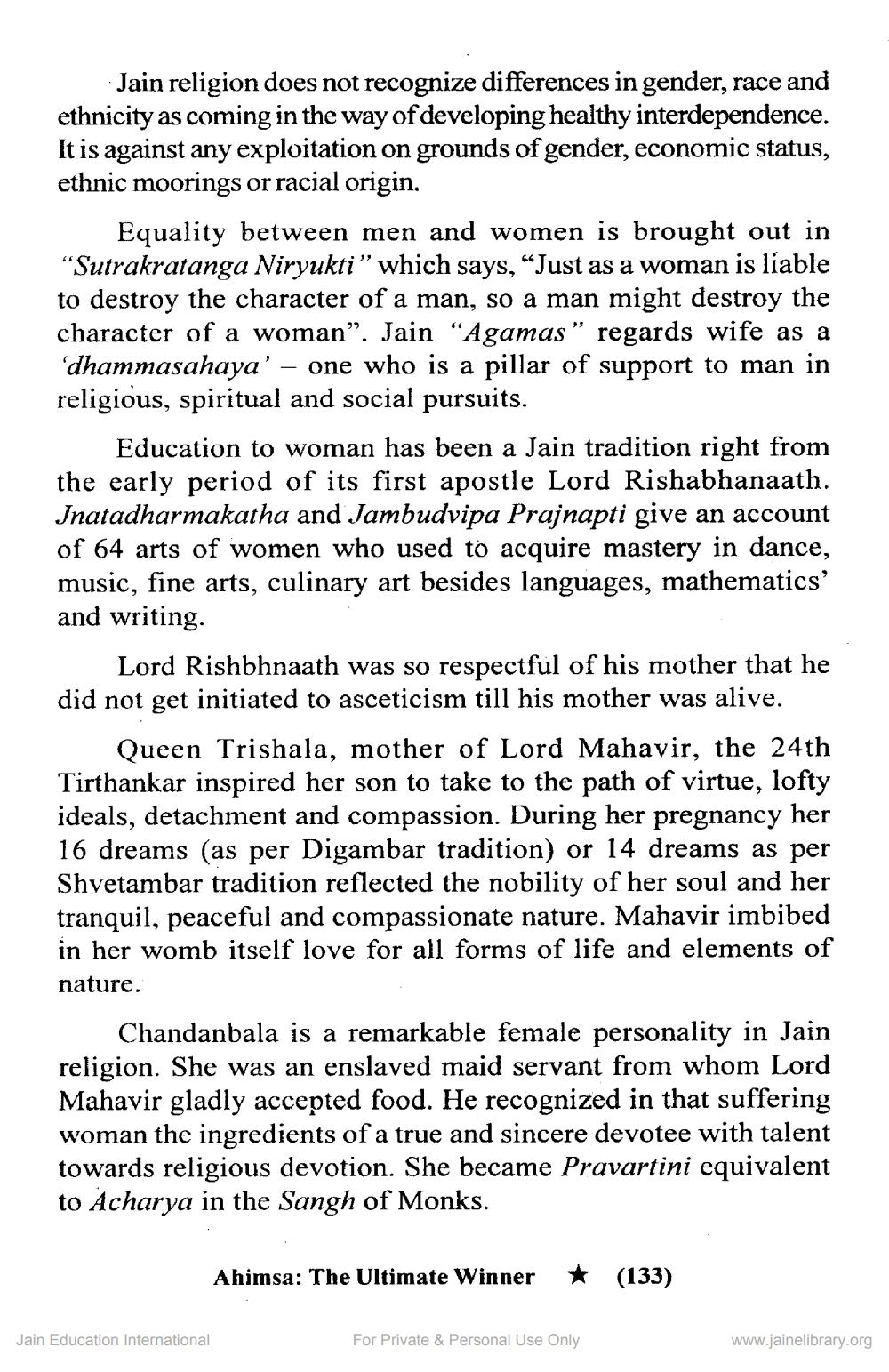________________
Jain religion does not recognize differences in gender, race and ethnicity as coming in the way of developing healthy interdependence. It is against any exploitation on grounds of gender, economic status, ethnic moorings or racial origin.
Equality between men and women is brought out in "Sutrakratanga Niryukti” which says, “Just as a woman is liable to destroy the character of a man, so a man might destroy the character of a woman”. Jain “Agamas” regards wife as a
dhammasahaya' – one who is a pillar of support to man in religious, spiritual and social pursuits.
Education to woman has been a Jain tradition right from the early period of its first apostle Lord Rishabhanaath. Jnatadharmakatha and Jambudvipa Prajnapti give an account of 64 arts of women who used to acquire mastery in dance, music, fine arts, culinary art besides languages, mathematics’ and writing.
Lord Rishbhnaath was so respectful of his mother that he did not get initiated to asceticism till his mother was alive.
Queen Trishala, mother of Lord Mahavir, the 24th Tirthankar inspired her son to take to the path of virtue, lofty ideals, detachment and compassion. During her pregnancy her 16 dreams (as per Digambar tradition) or 14 dreams as per Shvetambar tradition reflected the nobility of her soul and her tranquil, peaceful and compassionate nature. Mahavir imbibed in her womb itself love for all forms of life and elements of nature.
Chandanbala is a remarkable female personality in Jain religion. She was an enslaved maid servant from whom Lord Mahavir gladly accepted food. He recognized in that suffering woman the ingredients of a true and sincere devotee with talent towards religious devotion. She became Pravartini equivalent to Acharya in the Sangh of Monks.
Ahimsa: The Ultimate Winner
*
(133)
Jain Education International
For Private & Personal Use Only
www.jainelibrary.org




